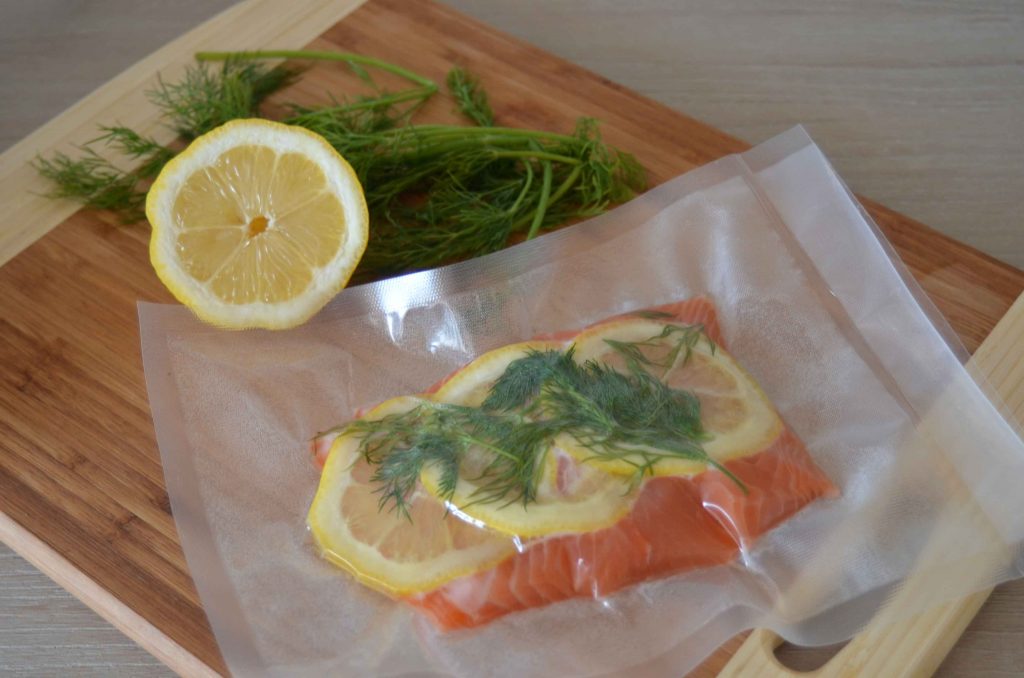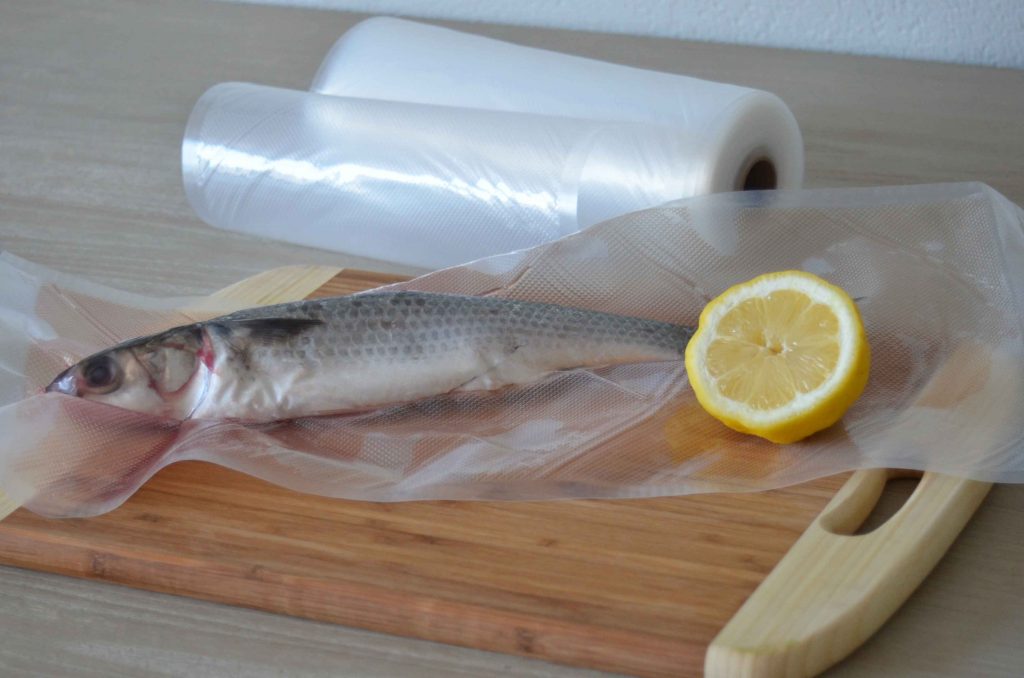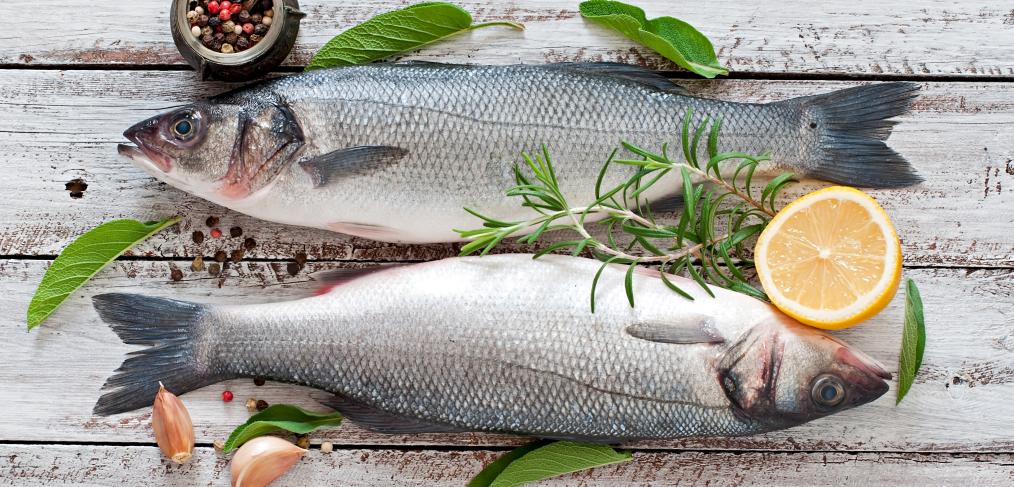Want to vacuum-seal fish but not sure how or why you should be doing it? The benefits of vacuum sealing are multi-fold, read on for Pac Food’s simple steps for preserving your prized catch.
Are you a keen fisherman or fisherwoman? Do you tend to catch more fish than you can eat? Not sure how to best store bulk fresh fish? It’s well worth vacuum sealing your hard-earned catch to prevent it from going to waste.
How long does vacuum-sealed fish last?
Vacuum-sealed catch can last in the freezer for up to two years if done correctly. The air is completely removed from the bag so no bacteria can grow and there will be no freezer burn either. That’s definitely a great reason to start vacuum sealing.
What do you need to vacuum-seal fish?
You will need the following equipment to correctly vacuum-seal fish:
- Plastic wrap
- Cookie sheet/baking tray
- Micro channel bags or rolls
- Vacuum sealer
How to vacuum-seal fish
1. Choose Your Vacuum Sealer and Bags
- Select the appropriate vacuum sealer for your needs. Options include our VS603 vacuum sealer, a very popular food vacuum sealing machine.
- Pick the right type of bags for your vacuum sealer. Common choices are channel bags and rolls, ribbed vacuum bags, and Foodsaver bags and rolls. If budget is a concern, cheap vacuum bags can also be used effectively.
2. Prepare the Fish
- Start by cleaning the fish thoroughly. Remove any scales, guts, and bones if necessary. Pat the fish dry with paper towels to remove excess moisture, as this helps in achieving a better seal.
- Depending on your preference and the size of the fish, you may want to portion it into smaller fillets or steaks.
3. Pre-Freeze the Fish (Optional)
- To avoid crushing delicate fish flesh during the vacuum sealing process, consider using the pulse function on our VS603 vacuum sealer. This is a controlled manual way of extracting the air from the bag. You can also pre-freeze the fish for about 1-2 hours on a baking sheet. This helps the fish retain its shape.
4. Load the Fish into Bags
- Place the prepared fish into your chosen vacuum sealer bags. If you’re using rolls, cut the roll to the desired length and seal one end before filling.
- Make sure the fish pieces are laid flat and not overlapping to ensure even vacuum sealing.
5. Seal the Bags
- Position the open end of the bag in the vacuum sealer. For machines that use channel bags and rolls or ribbed vacuum bags, ensure the bag is correctly aligned with the sealing strip.
- Activate the vacuum sealer. The machine will remove the air and create a tight seal. Follow the manufacturer’s instructions for your specific model of vacuum sealing machine or Cryovac machine.
- For food vacuum bags and rolls or Foodsaver bags and rolls, the process is similar. These bags are designed to work seamlessly with our VS603 vacuum seal machine.
6. Inspect the Seal
- Check the sealed bag to ensure that all air has been removed and the seal is tight. There should be no air pockets or leaks.
- If the seal isn’t perfect, you may need to repeat the sealing process or use a different type of bag.
7. Store the Sealed Fish
- Label the sealed bags with the date and type of fish.
- Store the vacuum-sealed fish in the freezer. Vacuum-sealed fish can last significantly longer than fish stored using traditional methods, maintaining its quality and freshness for several months.


Top tips for vacuum sealing fish
Pre-freeze
Vacuum sealing a fish or meat that isn’t pre-frozen can be very difficult due to the moisture it contains. The juices can get pulled into the vacuum sealer which may cause the machine to stop working. If the micro channel bag has moisture on the sealing end, the seal might fail and the fish won’t be vacuum sealed correctly (which causes freezer burn as the air gets in the bag). Always make sure the area where the seal will be is completely dry (2-3 inches from the top of the bag). This way you will always get a strong seal and no air will get in the bag.
Pat dry fish before vacuum sealing
Another way of successfully vacuum sealing your catch is to dry fresh fillets with paper towel before vacuum sealing them.
Avoid Overfilling
Leave enough space at the top of the bag to ensure a proper seal.
Use High-Quality Bags
While cheap vacuum bags can be cost-effective, investing in high-quality bags like our Pac Food Micro Channel bags and rolls can provide better results and more durable seals.
Monitor Storage Conditions
Even vacuum-sealed fish should be stored in a freezer to maximise its shelf life and prevent spoilage. By following these steps, you can efficiently vacuum seal your fish, preserving its freshness and flavour for months to come. Whether you’re using a basic or more advanced vacuum sealer, the key is to use the right type of bags and follow best practices for sealing. Enjoy the benefits of longer-lasting, perfectly preserved fish with your vacuum sealing machine!
To find out more about fishing, visit the Australian Fishing Online.
Pac Food is committed to providing customers with the best products, best prices and best customer service. Perfect for domestic and commercial use – whether you love fishing, camping or buying meat in bulk – and even small food & beverage outlets such as cafes.
Take advantage of our easy and secure online ordering system with Pac Food. View our extensive range of bags, rolls and vacuum sealers here. Don’t forget to keep an eye on our specials section – updated regularly – or view our range of combo deals to suit every budget. Got a question? Contact us and we’ll be happy to help.

